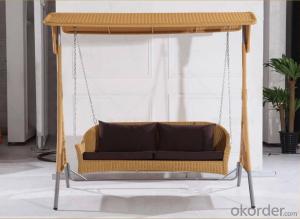Drilled Aluminum Plate
Drilled Aluminum Plate Related Searches
Led Light Bulbs For Ceiling Fixtures Led Lamps For Ceiling 42 In Ceiling Fan With Light Aluminum Coil Stock For Gutters Aluminum Foil For The Grill Hole Saw For Aluminum Plate Aluminum Tread Plate For Trailer Bow Plate For Aluminum Boat Aluminum Foil For Grow Room Aluminum Foil For Joint PainHot Searches
Stock Price For Aluminum Aluminum Coil Stock For Sale Aluminum Gutter Coil For Sale Used Aluminum Scaffolding For Sale 1/4 Aluminum Plate For Sale Aluminum Bar Stock For Sale Aluminum Round Stock For Sale Aluminum Diamond Plate For Sale Aluminum Scaffolding For Sale Craigslist 6061 Aluminum Plate For Sale Aluminum Dock Plate For Sale 7075 Aluminum Plate For Sale Aluminum Tread Plate For Sale Aluminum Checker Plate For Sale Aluminum Plate For Sale Near Me Plate Aluminum For Sale Aluminum Plate For Sale Aluminum Square Stock For Sale Aluminum Flat Stock For Sale Billet Aluminum Stock For SaleDrilled Aluminum Plate Supplier & Manufacturer from China
Okorder.com is a professional Drilled Aluminum Plate supplier & manufacturer, offers integrated one-stop services including real-time quoting and online cargo tracking. We are funded by CNBM Group, a Fortune 500 enterprise and the largest Drilled Aluminum Plate firm in China.Hot Products
FAQ
- Hi, I'm new here. Yoroshigu.I'm trying to make flash paper for magic tricks.To do that I have to make flash powder but in my location I can hardly find ingredients. Not to think about buying. Usually, I wait for a season and buy firecrackers. Then, I take the power and soak them into the paper and dry. This works but not so flash. Burned more likely.So, I wonder if I take aluminium oxide from aluminium oxide sandpaper and mix with powder from firecracker would produce a brighter flash than firecracker power alone?anyone know please share.
- You should set this project aside. Ignore my advice? You're on track for a Darwin Award. You win!
- Aluminum sheets are indeed a fantastic option for embellishing lighting fixtures. This material, known for its lightweight and versatility, can be effortlessly fashioned into diverse shapes and designs. Moreover, aluminum boasts exceptional resistance against corrosion, rendering it fitting for both indoor and outdoor lighting fixtures. Furthermore, aluminum can be conveniently coated or painted to achieve diverse finishes, offering limitless design prospects. Additionally, its reflective qualities enhance the overall lighting effect, making it an ideal preference for decorative lighting fixtures.
- Aluminum sheets are widely recognized for their exceptional weldability, thanks to their low melting point and excellent thermal conductivity. Various welding techniques, including TIG (tungsten inert gas), MIG (metal inert gas), and even spot welding, can easily be employed to join aluminum sheets. The weldability of these sheets can be further improved by utilizing specialized filler materials exclusively designed for aluminum welding. Nevertheless, it is crucial to acknowledge that the weldability may vary depending on factors such as the alloy composition, thickness, and surface condition of the aluminum sheet.
- There are several different methods of surface embossing aluminum sheets, each with its own unique process and outcome. Some of the most commonly used methods include: 1. Mechanical Embossing: This method involves using mechanical tools, such as rollers or presses, to create patterns or designs on the surface of the aluminum sheet. The sheet is passed through the rollers or pressed against a patterned surface, which impresses the design onto the metal. Mechanical embossing is often used for creating repetitive patterns, such as diamond or checkerplate patterns. 2. Chemical Embossing: This technique involves using chemical etching or engraving to create patterns on the aluminum sheet. A chemical solution is applied to the surface of the metal, which selectively etches away the desired areas, leaving behind the embossed pattern. Chemical embossing allows for more intricate and detailed designs to be created on the aluminum sheet. 3. Heat Embossing: Heat embossing is a method that involves using heat to create embossed designs on the aluminum sheet. A heated die or stamp is pressed against the surface of the metal, causing it to deform and create the desired pattern. Heat embossing is commonly used for creating raised logos or text on aluminum sheets. 4. Laser Embossing: Laser embossing utilizes laser technology to create embossed designs on aluminum sheets. A laser beam is directed onto the surface of the metal, vaporizing or melting away the desired areas to create the embossed pattern. Laser embossing offers high precision and allows for the creation of intricate and complex designs. 5. Roll Embossing: Roll embossing is a method where the aluminum sheet is passed through a series of engraved rolls, which impress the desired pattern onto the metal. Each roll has a different pattern or design, allowing for a variety of embossed finishes to be achieved. Roll embossing is commonly used for creating textured or decorative finishes on aluminum sheets. Overall, the different methods of surface embossing aluminum sheets provide a range of options for creating unique and visually appealing designs. The choice of method depends on the desired outcome, complexity of the design, and the specific requirements of the project.














































